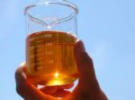National Biodiesel Board Applauds House Passage of Energy Bill
The National Biodiesel Board (NBB) applauds the U.S. House of Representatives’ passage of energy legislation with broad renewable fuel provisions. H.R. 6, the Energy Independence and Security Act, expands the Renewable Fuels Standard (RFS) in a manner that will encourage increased use of Biodiesel, and extends the federal Biodiesel tax incentive.
The Energy Bill, which passed by a vote of 235 to 181, will expand the existing RFS to 36 billion gallons by 2022. It would provide for a renewable requirement in diesel fuel, to be met by Biodiesel and other biomass-based diesel fuels. The legislation specifically requires that 500 million gallons of Biodiesel and biomass-based diesel fuel be blended into the diesel pool in 2009, gradually ramping up to one billion gallons by 2012. Additionally, the bill extends the Biodiesel tax incentive through Dec. 31, 2010, which helps make Biodiesel competitive with petroleum diesel fuel in the marketplace. (Source: The Washington Post).

Let us give credit to the efforts of Senator Maria Cantwell, a member of both the Senate Finance Committee and the Energy and Natural Resources Committee who promotes the production and use of Biodiesel. The bill surely protects the ability of American Biodiesel producers to compete in foreign markets. My concern is, will it compete in the marketplace, here in America? There should be a viable domestic market for biodiesel. To make the bill succeed, coordination and implementation shall be accordance with the state, suppliers, processors, fuel marketers, distributors and the would be end users as well.
Among the benefits of using Biodiesel are:
- Biodiesel reduces our dependence on foreign oil
- Biodiesel reduces emissions of Carbon Dioxide that cause a lot of problem for the environment. In other words, reduces the greenhouse gas emission
- Biodiesel is an efficient fuel. For each unit of energy consumed in the production of fuel, it creates 3.2 units of energy.
If you will use Biodiesel, there is no need to change your car or there is no need for engine modification. In addition to this, there are spare parts inventories that are readily available. You don’t need to hire a special mechanics for your car. Like any other vehicles hoses need to be checked after the first 6 months. Replacement of non-compatible hoses may be necessary, but is not usually expensive and hard to find.
I remember a friend of mine, Dustin Hall, a graduate of Reed College in Portland, Oregon, just years before the passage of the Bill, used his summer break back in his freshman year and established a Biodiesel Plant in the Philippines, a country in the South East Asian region. He chose to build the plant in the Philippines because the country is rich in coconut trees. And his father spent some time in the country when he was young. And because Dustin believed that coconut oil can be used as Biodiesel, he set-up the DH Coco Diesel in the Philippines. The plant produces 156 gallons of 100 percent coconut diesel in a day. The second largest producer of Biodiesel in that country.
According to Dustin, Biodiesel is a combination of diesel fuel and used or new vegetable oils or animal fats. For example, oil used for cooking French fries or donuts can be used to make a car run. This explains why some people say that cars that run on Biodiesel sometimes end up smelling like newly fried fries from McDonalds! hahaha. Merry Christmas!














